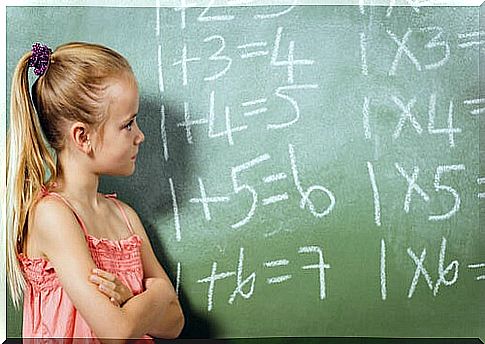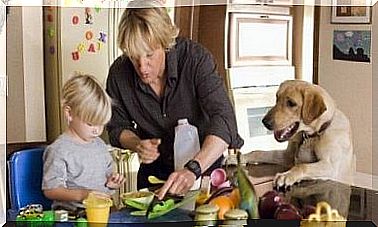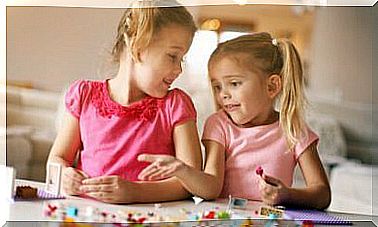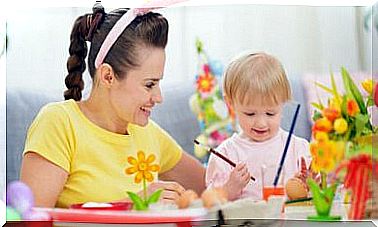6 Tricks To Teach Children Multiplication

If you embark on the difficult task of teaching multiplication to your child, patience and perseverance are the keywords. Here are some tips on how to successfully complete this mission.
There are people for whom mathematics is something very easy and who, from an early age, have always managed to do the operations without any problem. However, things don’t always turn out this way – for some children it is a huge challenge. When it comes to teaching kids about multiplication, there are some tips that can be of great help.
After learning addition and subtraction, children are ready to assimilate a new math skill: multiplication. It will prove crucial throughout their schooling and for the rest of their life. However, learning them is not always that simple. What can we do to help them?
Tips for teaching multiplication to children
If you want to teach multiplication to your children, here are some recommendations that can make it easier for both of you:
1. Explain the fundamentals of multiplication
As happens in many aspects of life, it is not enough to say what needs to be done. It is much more effective to explain why you have to do it that way. So if children understand that multiplication is a shortcut to doing complex or consecutive sums (just to mention a possible explanation), they may have less difficulty.
Furthermore, this will motivate them to try to understand them. Children have a real passion for learning, even though it may sometimes seem like it isn’t. So, learning more about such an important process in life will be very fascinating for them.
2. Don’t start with the multiplication tables
If understanding what multiplication is is too complex for the little one, the worst thing you can do is torment a child with a multiplication table full of numbers. Instead, start with isolated operations.
Practice with the dear, old 2 × 2, 2 × 3, 3 × 3 multiplications, and then move on to larger ratios, as are the multiplication tables. A tip: tell him to replace the “x” with the word “times”. In this way he will understand that “2 × 2” is, in fact, “twice two”.

3. Practice makes perfect
Sure: it is a cliché. Nonetheless, it doesn’t stop being true. If you want to be good at something, you have to practice. In this case, multiplications are a prime example of the validity of this claim.
Often, the school environment is not the best for teaching children to multiply. Consequently, if you want your child to learn this method, you need to take some time to practice at home every day.
4. Use multiplication tables
The multiplication table can prove to be of great use in thinking about multiplication from another point of view. Thanks to it, the commutative property of multiplication is clearly highlighted: in other words, that 5 × 3 equals 3 × 5.
The multiplication table consists of a table that contains, in the first row and in the first column, the numbers to be multiplied, and, in their intersection, the product of the operation.
At first glance, it may seem extremely complex to understand. However, with patience and dedication, you can teach them to correct their own exercises with the help of this tool.
5. Use memory
When the time comes to learn the times tables, it is very effective to think about them in an alternative way. What are we referring to? Teach him that in the table of 0 the result is always 0; that in that of 1 the result is the same number that is multiplied; that in that of 2 it is double the multiplied number; that the one on 5 goes from 5 to 5; and that that of 10 involves adding a 0 to the multiplied number.
6. Help yourself with songs, games and stories
As a complement to what has been said, you can use these activities. Particularly didactic songs are available online, while there are others that are transmitted from generation to generation. Furthermore, you can use games: they can also be found on the internet, both for the computer and for the mobile phone.
Finally, you can tell stories, like that of Robin Hood, useful for explaining the times table of 9. In this story, the protagonist steals from the rich (the figure on the right) to donate to the poor (the figure on the left), by hand. as the table goes on.

Other recommendations
While it may seem obvious, it must be stressed that in order to teach multiplication to primary school-aged children, one must wait for the appropriate time. If they are not ready, you will only succeed in frustrating them or developing an aversion to this matter.
On the other hand, finally, always try to teach with affection and patience. If things don’t go the right way, don’t lose your temper and, above all, don’t belittle the little one’s attempts. On the contrary, it is very good that you congratulate him and value his progress. In this way his confidence and enthusiasm will increase, and learning will be more effective and enjoyable.









